2023 | Estonian National LibraryStrategicService DesignStrategy Design
RaRa – Igniting a strategic change in the Estonian National Library
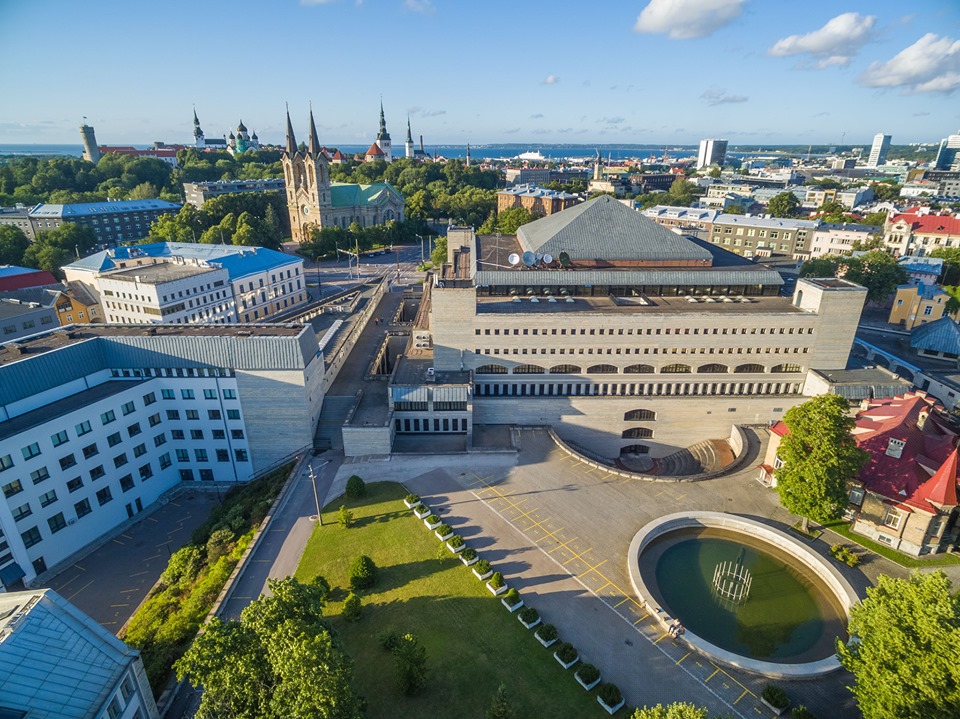
Setting up a 4-year long project with a user-centered approach
The National Library of Estonia, known today as RaRa, wanted to apply service design methodologies to shape the future of the Creative and Educational area in their new building opening in 2025.
They specifically wanted to do the work themselves and commissioned Velvet to conduct a training with a dedicated team – The Design Network of the Library.
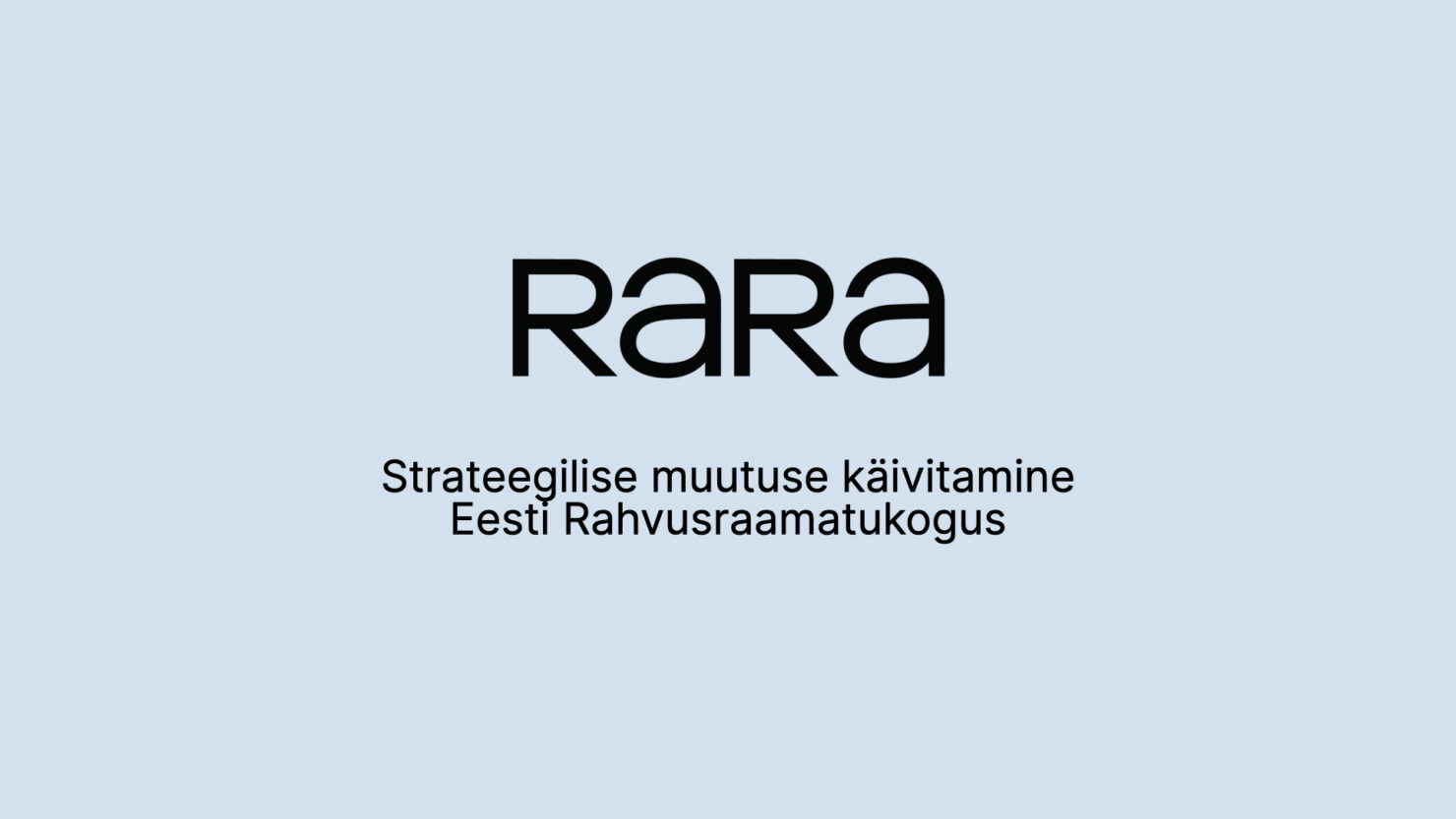
The training
During the course of 4 months, Velvet service designers guided the RaRa team through a design process, introduced our approach to service design, and worked with different methods and tools. The training consisted in a series of work sessions that combined theory and practice with independent work conducted by the RaRa team.
The main aim of the training: to set up the large project with a strategic and user centered approach. Our team of service designers focused on the development of a concept for the space and a roadmap for the work that would follow for the client after the training.
Understand and Discover – context, user groups and actors
In the first sessions, we worked to better understand the context of libraries around the world, focusing on their creative and educational areas as places of discovery, learning and community making. We conducted desktop research, analysed trends and reviewed several case studies of libraries that shared our user-centered approach.
At the same time, we focused on the users of the library in the present and the future users as well. The team realised that there is a far wider audience for these new services than a typical library is used to – and that we actually didn’t know much about the user groups, their needs, hopes and dreams.
We needed to build empathy with the user groups, and for that, we used the known unknowns framework to challenge the team’s assumptions and gaps of knowledge. According to their current level of influence or interest in the space and services (AS-IS), the team analysed user groups and actors and discussed the potential future scenarios (TO-BE) for such groups.
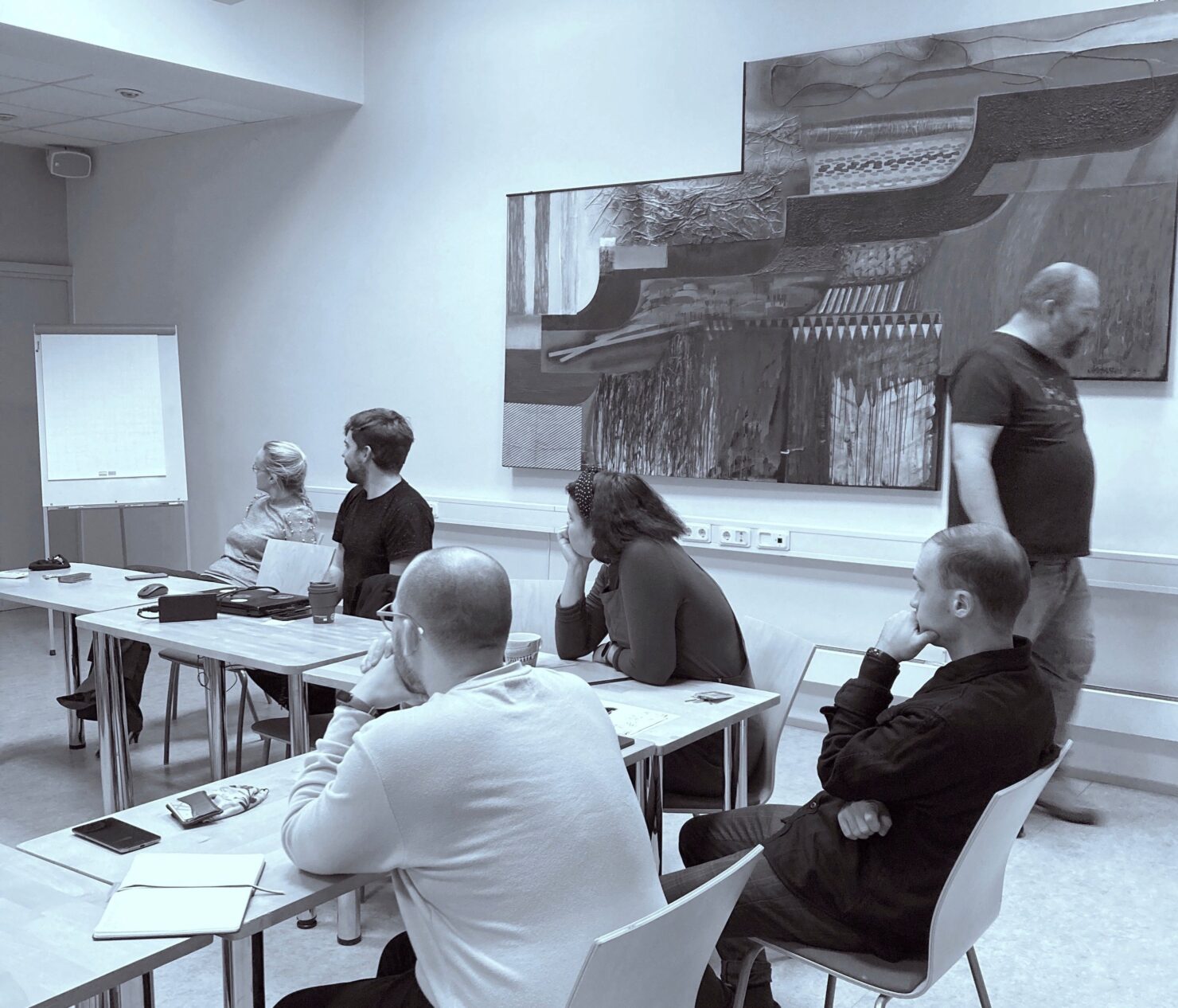
We asked ourselves: “If given more influence, could a specific group increase their interest? or “If we want this group to be more interested, what do we need to find out about them?”
RaRa’s team independent work included:
- interviews with user groups – conversations with students, teachers, staff, parents and other user groups of visitors, to discover their values, behaviours and beliefs but also their practical, functional and environmental needs for the space
- service safaris
- visits and observations in other libraries, museums and schools in Estonia and abroad
- Session by session, we gradually built a framework to help the team develop the educational and creative area with a more human- and future-centered approach
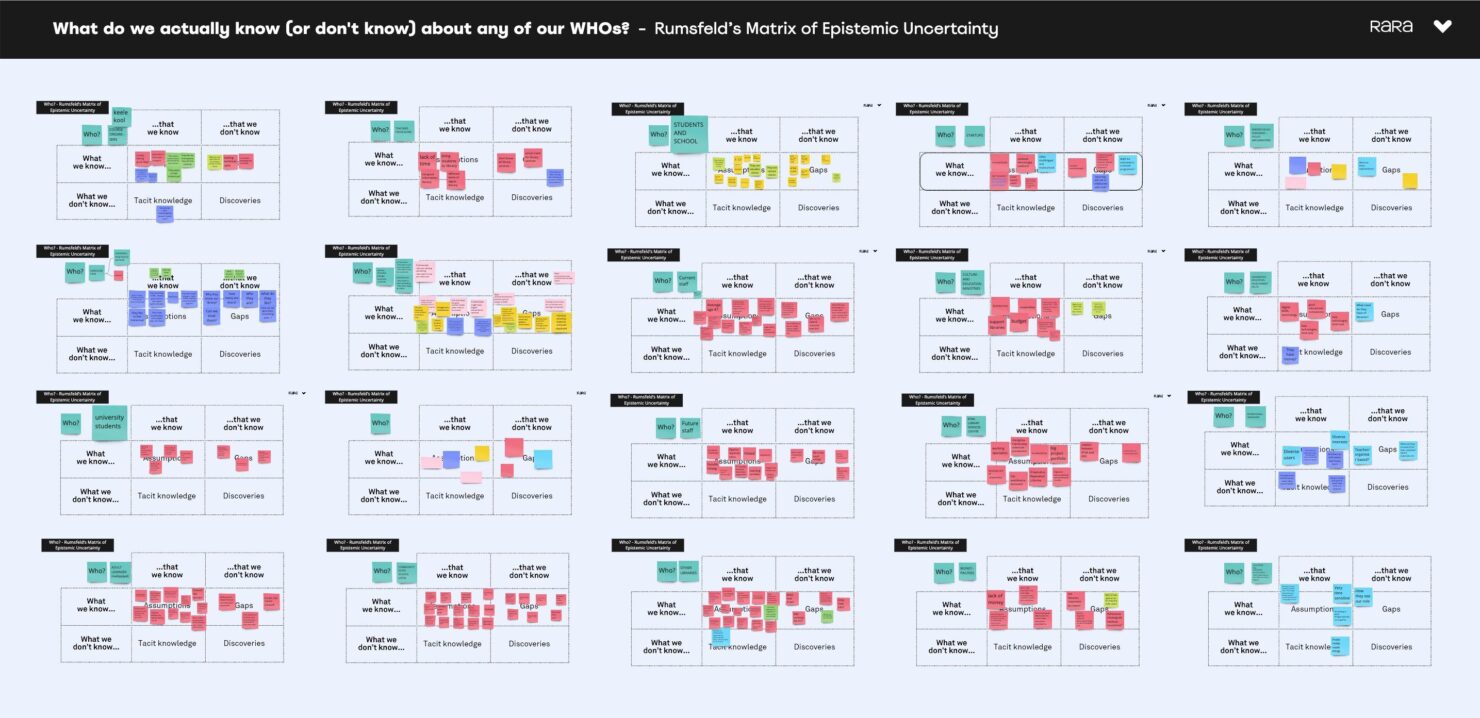
The strategy – purpose and design principles
When the training started, the working group’s “Why’s?” were far apart. From giving access and permission to play with our cultural heritage, to creating a co-operation network, to just being a more friendly version of a library and a cool place to work. We defined together the purpose of the future creative and educational area with the idea of a new user interface to the Estonian cultural heritage.
A more collaborative mindset and participatory approach for the design of this new Educational and Creative area and for the new Library at large, led the team to discuss and decide on how to refer to user groups and actors, including library staff, as a collective “we”.
We explored and discussed how those new relationships and interactions would take place in the future area, which was a great starting point for the next step in our process: creating design principles.
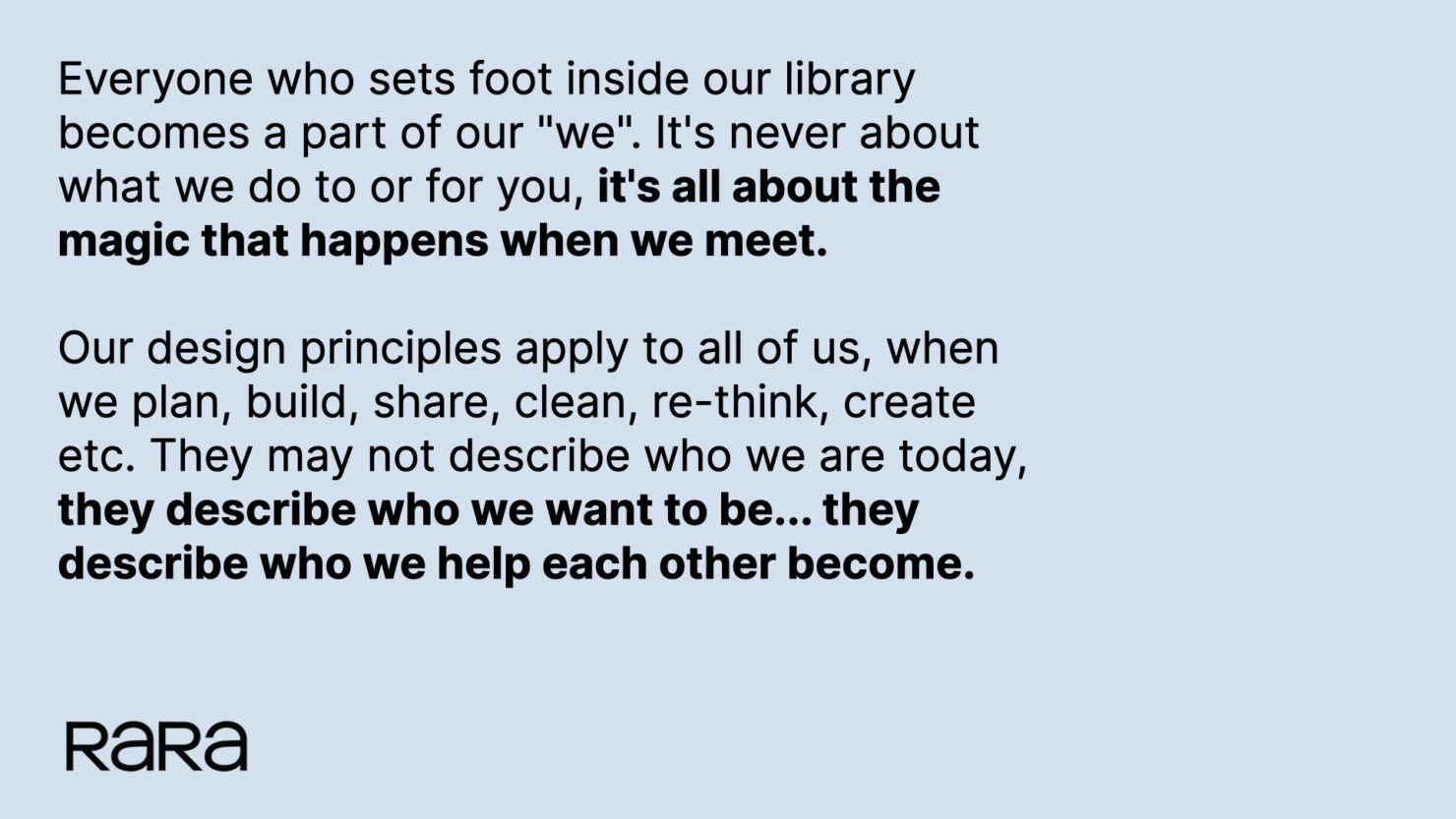
We co-created a series of design principles that helped describe and shape the interactions between the people that formed that “we” but also define a new approach to creativity, learning, sharing and content creation. These principles were proposed as guidelines that the team would follow through the whole design process, informing design decisions and used to validate the outcome of the work in the next stages, when designing in detail the services, interactions and the interior of the space.
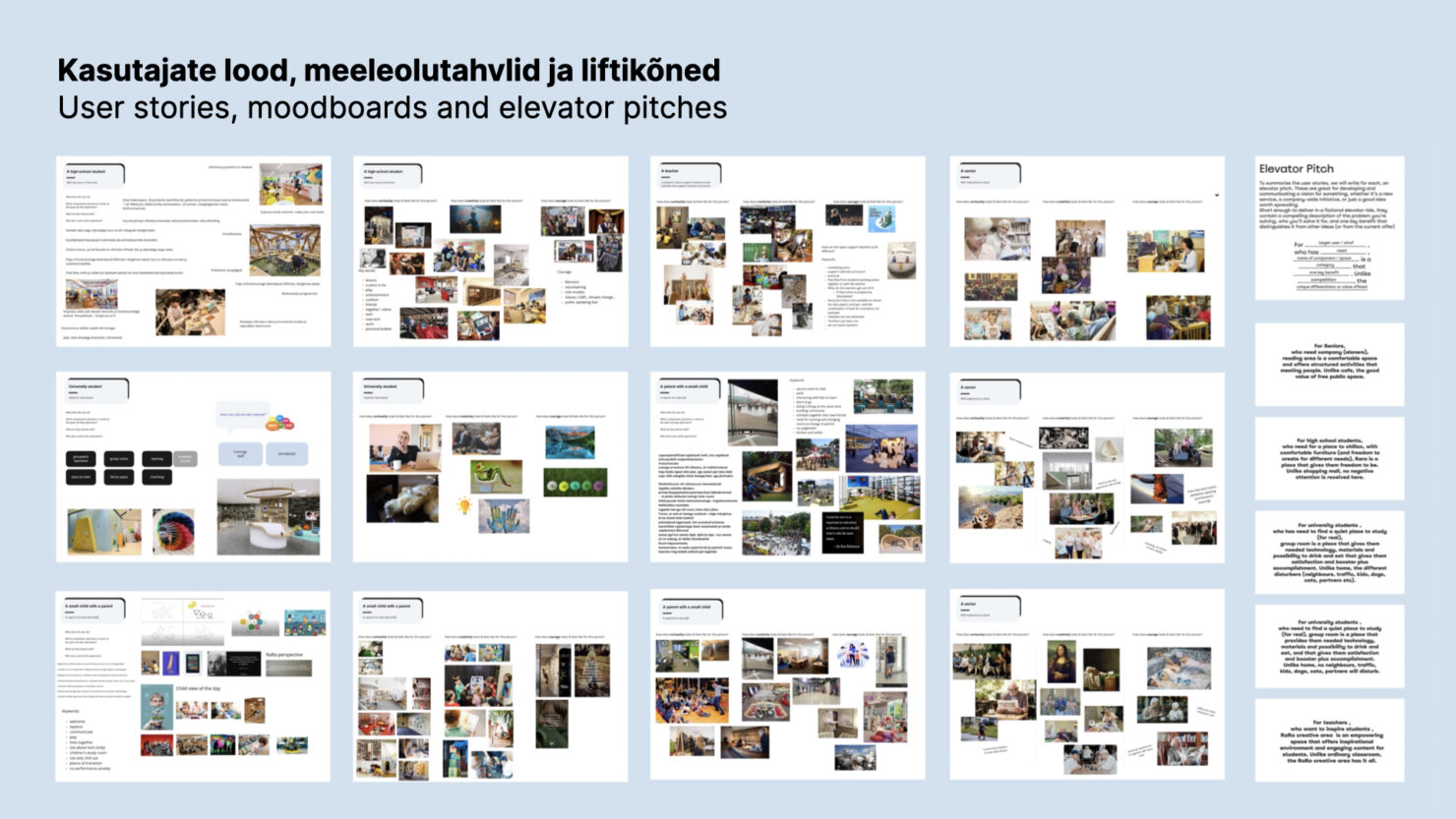
The outcome
The training helped develop RaRa’s team service design capabilities and on top of that, supported the creation of a preliminary strategy to set up the larger project for the design of the Creative and Educational area in the future library. Based on the research findings and the area’s purpose and design principles, the team generated elevator pitches – to describe their ideas for services and spaces for each of the main user groups, and created inspirational mood-boards to start visualising those ideas for the spaces.
The training concluded with the creation of a project roadmap and the materials for sharing the results of the training in the upcoming activities, especially the ones needed for calling to action users, actors and library colleagues!
We met the team a few months after our collaboration and were glad to hear about the impact that our time together has had in the Design Network and the organisation at large. Not only there has been progress regarding the collaboration of different departments in the Library but an overall mindset shift to focus on their purpose and start focusing more in their users. In their own words:
”Everything we do, we start with the WHY and we work to understand the WHO, the ones we are designing for”.
We can’t wait to see this Creative and Educational area come to life! Stay tuned…
I think that the biggest learning point from our collaboration is that inclusivity and a human-centered mindset will be achieved through multidisciplinary collaboration. We see the world from the user’s point of view, but we also study the big picture and try to bring all opinions and aspects together through collaboration.
RaRa Design Network
Team
- Carolina Maia Groisman – Designer
- Janno Siimar – Designer
- Kadri Pukk – Project lead
Partners
- RaRa’s Design Network: Margus Veimann, Paula Põder, Henrik Roland Helm, Mari-Liis Seer, Liina Luhats-Ulman, Viktor Gurov, Kristiina Kaju, Liis Raadla – Client